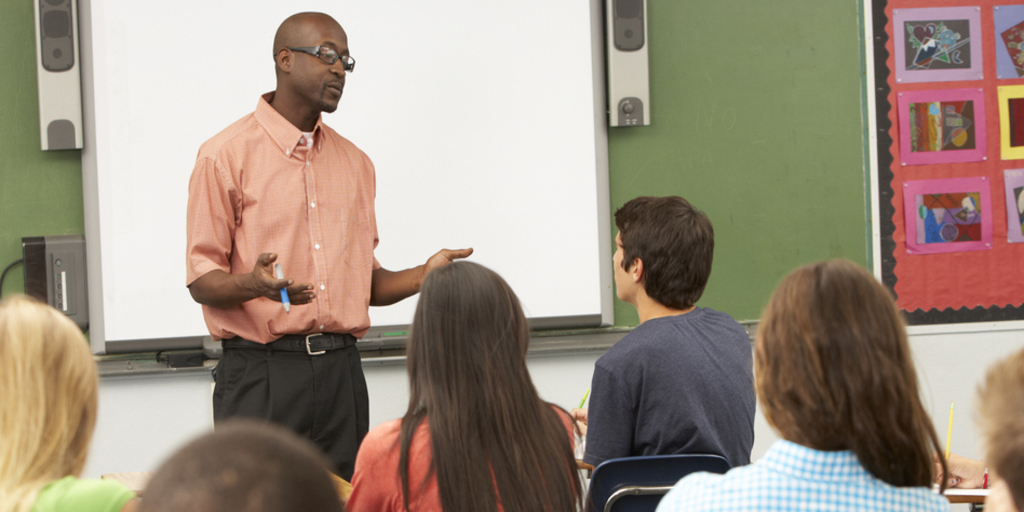Over the holidays, Adam Grant, Wharton professor and author, tweeted some sage presentation advice from a 2015 EdSurge article:
“How to use words in PowerPoint, according to research:
(a) Don’t put them on your slides, period
(b) If they’re on your slides, don’t say them out loud
The redundancy of both hearing and reading a message increases cognitive load, undermining learning.”
In higher education, we present so much content, so frequently that we may no longer consider our classes “presentations.” However, every time we share our ideas, stories or information with our students, we are presenting.
Very few professors are trained presenters so this is a great opportunity to “go to the literature” as Joan Didion would say. Here is some great presentation advice from a handful of the best resources to help us better build slides and present to our classes:
Start Your Presentations with a 40-Word Exercise
“Strive for no more than 40 words in the first 10 slides. This will force you to think creatively about telling a memorable and engaging story instead of filling the slide with needless and distracting text,” said Carmine Gallo in a 2014 blog post. In his book Talk Like Ted, Gallo deconstructs why particular Ted Talks are the most effective by breaking them down into nine different categories. One of the reasons this book is a terrific resource is that is full of great examples that are all easily accessible on the TED website.
Gallo’s 40-word exercise is a great starting point for professors looking to build better slides. Students can benefit from this exercise too – place a 40-word maximum requirement for student presentations and see how it goes!
Make the Complex Clear, Visually
“Don’t just make pretty talking points. Instead, display information in a way that makes complex information clear.” slide:ology author Nancy Duarte’s firm is known for creating the presentation for Al Gore’s film An Inconvenient Truth and this book focuses on visual expression, specifically when using presentation software. Duarte’s other books and the Duarte agency website are also full of amazing resources to assist presenters including a blog with tremendous amount of content on the topic. Duarte’s slide:ology is especially helpful in showing you how to more effectively present data in slides, a difficult task in many disciplines. “Data slides are not really about data. They are about the meaning of the data.”
Talk About What You Know
“If you feel deeply about your subject you will be able to think of little else… fill your mind with your speech-material and, like the infilling water in the glass, it will drive out your unsubstantial fears.” The “you do you” of 1912, Dale Carniege’s advice from The Art of Public Speaking has been repeated in some form across almost every public speaking book published since. Carniege emphasizes knowing your topic well, focusing on core messaging and practicing your presentation to gain confidence.
Make Your Presentations Stick
“To make our communications more effective, we need to shift our thinking from “What information do I need to convey?” to “What questions do I want my audience to ask?” While Chip and Dan Heath’s Made to Stick is not specifically a presentation book, it is a detailed and entertaining analysis into what makes certain ideas endure while others are forgotten. This is a terrific guide for educators helping to find your core messages and reframe your ideas to make them more “sticky,” helping your students better understand and retain what you present.
But Don’t Let Your Own Knowledge Blind You
“Knowledge is a double-edged sword. It allows you to do something, but also makes you blind to other things that you could do.” David Epstein’s Range is not a book on presentations either but speaks to the benefits of becoming a generalist in a world that has long favored specialization. Another great read for educators who are inherently highly specialized in their own field. Made to Stick also echoes this idea which it refers to as the “Curse of Knowledge.” The Heaths argue that you don’t need to “dumb things down” to make your presentation more effective, but rather you need to, “find a ‘universal language,’ one that everyone speaks fluently. Inevitably, that universal language will be concrete.”
Becoming a better presenter is a great way for you to enhance student learning while also strengthening your own skillset. The new year can be an opportunity where even small improvements in your slides and delivery can make an immediate and impactful difference for your classes.


